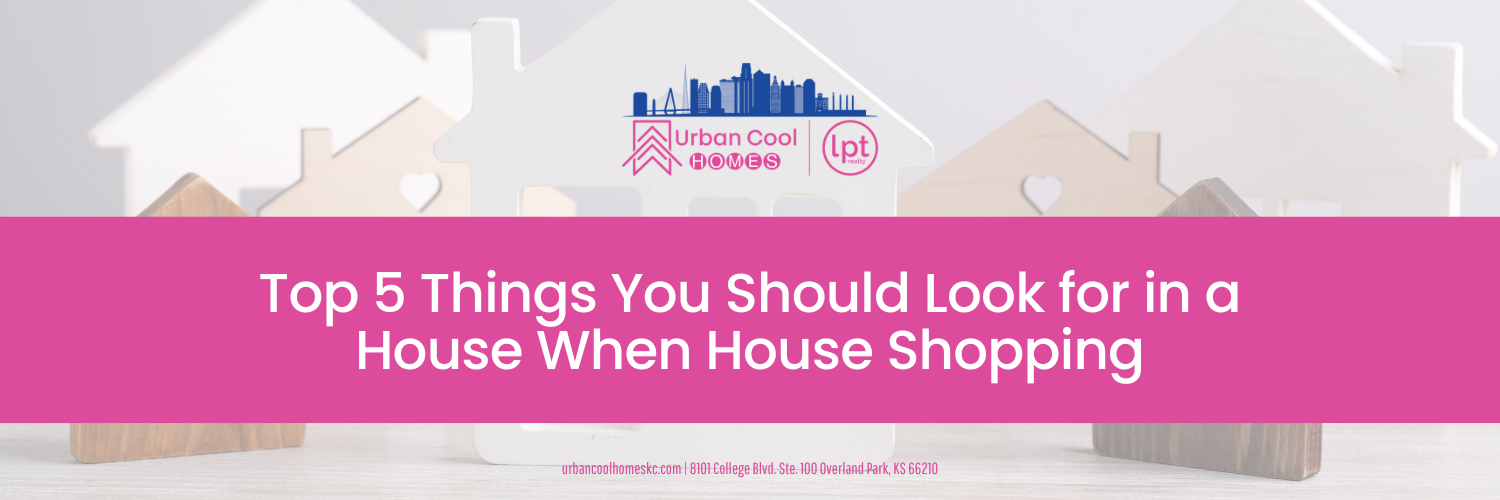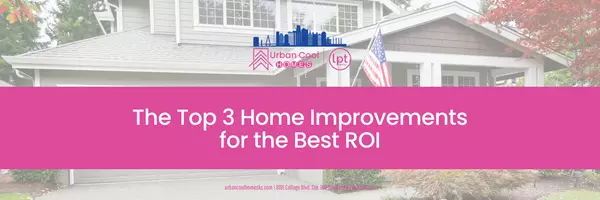Top 5 Things You Should Look for in a House When House Shopping

Buying a home is one of the biggest investments you’ll ever make, and the process can feel both exciting and overwhelming. With so many options on the market, it’s easy to get swept up in beautiful staging or trendy finishes and forget to pay attention to the things that really matter long-term. If you’re house shopping and wondering how to choose wisely, focusing on the fundamentals will help you avoid buyer’s remorse and ensure your purchase adds lasting value to your life. In this guide, we’ll break down the top five things you should look for in a house when house shopping, why they matter, and how to evaluate them. Whether you’re a first-time buyer or experienced homeowner, these tips will help you prioritize what’s most important.
Top 5 Things You Should Look for in a House When House Shopping
1. Location, Location, Location
The old saying in real estate is true: location is everything. A home’s address impacts not only your daily lifestyle but also your long-term investment. While you can remodel kitchens or replace flooring, you can’t move the house itself. That’s why evaluating location should be your first priority when house shopping. Start by looking at the neighborhood. Is it safe? Walk the area at different times of day to get a feel for activity levels, noise, and overall vibe. Check crime reports and ask locals about their experiences. Next, consider convenience. How close is the home to your work, schools, grocery stores, restaurants, or major highways? A long commute might seem manageable at first, but over time it can impact your quality of life. School districts are another major factor—even if you don’t have children, homes in strong school systems tend to hold their value better and attract more buyers down the road. Don’t forget to research future development plans. That empty lot down the street could become a shopping center, highway extension, or apartment complex. Cities and counties often publish planning maps that can give you a glimpse into what’s coming. Finally, think about lifestyle amenities. Parks, trails, cultural centers, and community features add enjoyment and can boost property values. A great house in a poor location can quickly lose its shine, while a modest home in the right area often becomes a wise investment.
2. The Overall Condition of the House
Once you’ve narrowed down the location, it’s time to look at the physical condition of the property. This is where first-time buyers often get distracted by cosmetic upgrades like new paint colors or stylish fixtures, while overlooking big-ticket repair items that can drain a budget. Pay close attention to the home’s structure and systems. Start with the roof—how old is it, and what material is it made of? A new roof can cost tens of thousands of dollars, so you’ll want to know if replacement is looming. Inspect the foundation for cracks, uneven floors, or signs of water intrusion. Structural issues are expensive to fix and can affect safety. Next, evaluate the home’s major systems: HVAC, plumbing, and electrical. Ask about the age of the furnace and air conditioning units, water heater, and whether the electrical panel has been updated. Old systems may function for now but can quickly become costly. Windows and insulation are also critical for energy efficiency. Drafty windows or poor insulation may not seem like immediate dealbreakers, but over time they can raise utility bills and make your home less comfortable. Another key factor is moisture. Look for water stains, musty smells, or signs of mold in basements, crawlspaces, and bathrooms. Water problems often signal bigger issues with drainage or roofing. Lastly, remember that cosmetic details are easy to change. Outdated wallpaper or carpet can be replaced, while major repairs like foundation work or full system replacements require a significant financial commitment. By paying attention to condition, you’ll avoid buying a “money pit” that looks pretty on the surface but hides expensive problems.
3. The Floor Plan and Layout
When you walk through a home, don’t just ask yourself if you like how it looks—ask if the floor plan will actually support your lifestyle. Layout matters far more than square footage. A poorly designed 2,500-square-foot home may feel cramped, while a well-planned 1,800-square-foot house can live large. Consider how the main living areas flow. Is the kitchen open to the living room, or is it tucked away? Do you prefer defined spaces or an open concept? If you like entertaining, you may want a large kitchen island, open sightlines, and easy access to outdoor areas. If you work from home, a dedicated office space away from noisy areas might be essential. Think about bedroom placement. Parents with young children may want bedrooms close together, while families with teens often prefer a split-bedroom plan for privacy. If you plan to age in place, a main-floor primary suite and minimal stairs may be non-negotiable. Storage space is another often-overlooked factor. Walk-in closets, pantries, basements, and garages can make daily life more organized and enjoyable. Outdoor living space is part of the layout too—patios, decks, or fenced yards can enhance usability. Remember, changing the floor plan can be difficult and expensive. While you can knock down some non-load-bearing walls, major layout changes usually require permits, structural work, and significant investment. That’s why it’s wise to choose a house with a layout that already aligns with your needs, rather than assuming you’ll remodel later.
4. Potential for Future Value and Resale
Even if you plan to live in your new house for decades, it’s important to think about resale potential. Life changes—new jobs, growing families, or downsizing—can lead to selling sooner than expected. When house shopping, evaluate how well the home will appeal to future buyers. Start with size and bedroom count. Three-bedroom, two-bath homes often have the widest appeal, especially for families. Unusual layouts, like a single bedroom on the main floor and the rest in a basement, may be harder to sell. Look at curb appeal too. A house that looks attractive from the outside creates a positive first impression and draws buyers in. Location, as we discussed earlier, also heavily influences resale value. Beyond that, consider whether the home has features that are universally desirable. A functional kitchen, updated bathrooms, ample storage, and a good backyard often rank high on buyer wish lists. At the same time, avoid overly customized properties. A home designed around one person’s unique tastes—like bold paint choices, unusual architecture, or highly specialized rooms—can narrow your buyer pool. Market trends matter as well. Ask your agent how values in the neighborhood have changed over time and whether the area is growing. Buying in a community that’s up-and-coming can position you for appreciation, while overspending in a declining neighborhood can be risky. Finally, think about renovations. Small, strategic updates like modern lighting or new countertops can boost resale, but avoid homes that would require massive overhauls to meet market expectations. Choosing a home with solid resale potential protects your investment and gives you more options in the future.
5. The Intangibles—Lifestyle Fit and “Feel”
While the practical factors are critical, don’t underestimate the importance of how a house feels to you. Beyond numbers, layouts, and resale values, your home should fit your lifestyle and bring a sense of comfort. Start by envisioning your daily routines. Where will you drink your morning coffee? Does the living room feel like a space where you can relax? Is there enough natural light to make the home feel bright and welcoming? Pay attention to outdoor areas too. If you love gardening, a backyard with space for raised beds might be perfect. If you have pets, a fenced yard could be essential. If you value peace and quiet, a home backing to a busy road might not be right no matter how beautiful the interior is. Think about noise levels, privacy, and even the general energy of the neighborhood. Walk around and see if you feel a sense of belonging. Intangibles are harder to measure, but they play a major role in long-term happiness. Sometimes a house simply “feels right” when you walk in. Trusting your instincts—while also considering the practical factors—can lead you to the perfect home. Remember, you’re not just buying walls and a roof, you’re buying a place to build memories, host holidays, raise families, or find peace after long days.
Putting It All Together
When house shopping, it’s easy to get distracted by surface-level details like trendy fixtures or freshly painted walls. But by focusing on the top five things to look for in a house—location, condition, floor plan, resale potential, and lifestyle fit—you’ll make a smarter, more satisfying purchase. Location determines your daily life and long-term investment. Condition protects you from costly surprises. Layout ensures functionality for your family’s needs. Resale potential safeguards your financial future. And lifestyle fit ensures your home becomes a true sanctuary. Balancing these priorities can take time, but it’s worth the effort. A home that checks all five boxes not only provides shelter but also delivers peace of mind, enjoyment, and financial security. As you tour homes, keep these factors top of mind and make a checklist. Ask tough questions, look beyond the staging, and focus on what truly matters. Doing so will empower you to choose a home that isn’t just beautiful but also practical, lasting, and aligned with your dreams.
Categories
Recent Posts











